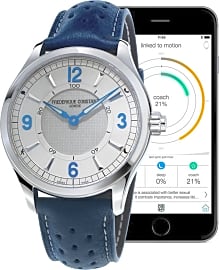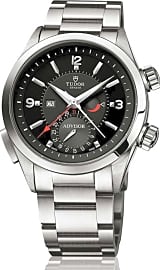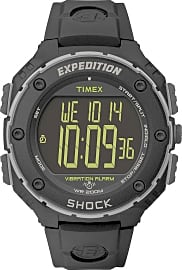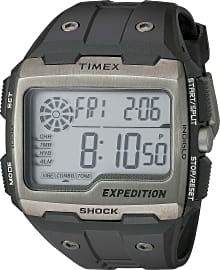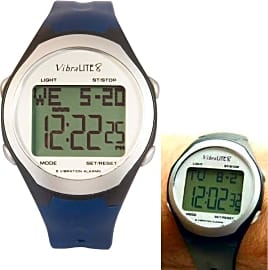The 10 Best Vibrating Watches

This wiki has been updated 38 times since it was first published in August of 2015. If you need private reminders throughout the day for things like medications, important appointments, or even to catch your favorite TV shows, check out our selection of vibrating watches. They come in a variety of designs and at price points to suit every style, budget, or medical necessity, and are ranked by their accuracy, special features, durability, and appearance. When users buy our independently chosen editorial selections, we may earn commissions to help fund the Wiki.
Editor's Notes
October 22, 2020:
We decided to send the previously included E-Pill Cadex Sport packing, primarily because it betrayed its primary demographic of elderly people who need pill schedule reminders by giving them a screen that was far too small to read for anyone whose eyes have begun to decline. But with the Vibra Lite 8 in place to provide for those customers, we set our sights on something at the other end of the quality spectrum in the Jaeger LeCoultre Master Memovox. This model is a dressy counter to the Tudor Advisor also on our list, and each model offers dual mainsprings in their automatic movements that allow you to fully wind and use the alarm function without having to worry about its effect on the timekeeping of the watch.
We also updated the most popular smartwatches in the category to include the Apple Watch Series 6 and the Samsung Galaxy Watch 3, both of which boast a high degree of functionality, though that often comes at the expense of battery life. The 45mm Samsung does get more battery life than the 41mm version, and it provides you with more surface area to manipulate its touchscreen, but there's no getting around the fact that it's simply too big for many people's wrists.
November 13, 2019:
Vibration features are often associated with cheap watches, and we wanted to find a few options that offer users a nice timepiece that also happens to vibrate. Of course, the top tier smartwatches like the Apple Watch Series 5 and the Samsung Galaxy Watch Active 2 are somewhat obvious options, so we went looking for high-end analog varieties that still boast vibration.
One company that's a relative newcomer to the luxury watch sector is Frederique Constant, and they've offset the cost of supporting niche mechanical offerings with quartz-powered options and even some horological smartwatches like the Frederique Constant FC-282. If you look closely on the dial of this option, you'll see markers just beneath the bezel at the 2, 4, 8, and 10 o'clock positions that indicate what the watch's vibration is from, like call, text, and sleep alerts.
We also included a bit of a moon-shot watch in the Tudor Advisor. It's definitely on the expensive side, but it's one of the most complex models made by the child company of Rolex, so the quality is unquestionable. It's a fully mechanical watch with a separate mainspring that drives the alarm, and whose power actually has a little meter complication at three o'clock.
Adventures In Timekeeping
They are perfect for people who want a digital watch with extra reminders built in to help them stay on task.
Do you ever find yourself forgetting to complete menial tasks such as setting out the garbage on trash day or making cupcakes for your child's school bake sale? Do you have a child with ADHD who can't seem to stay on task or a child with special needs struggling with potty training? Are you trying to get in shape and track your fitness goals, but your partner is sick of being awakened by your alarm at 5:00 every morning?
A vibrating watch just might be what you need to solve these problems and more. They perform all of the same functions as the average digital watch with the added benefit of setting multiple alarms and vibrating either silently or in tandem with sound depending on your chosen settings.
Vibrating watches act as great reminders for kids, the elderly, or people with disabilities such as hearing impairment. Most of them have locking settings and multiple alarms for people who struggle to remember times and appointments. You can choose from basic watches with simple functions to more durable, water-resistant models. They are perfect for people who want a digital watch with extra reminders built in to help them stay on task. You can even use one as your morning alarm so you are sure to wake up, but not your partner or anyone else in your home.
While many vibrating watches are digital, not all are. Some come with solar powered options and traditional watch faces rather than digital settings. You can find a vibrating watch to fit nearly any style preference. No matter what style you choose, vibrating watches are generally easy to program so you can get started with your day. Some vibrating watches even double as sleep and fitness monitors.
Benefits Of The Vibrating Watch
Research has shown that vibrating watches benefit people with a number of different conditions such as hearing impairment, ADHD, incontinence, and even dementia. They act as reminders to people with these conditions to help them focus and remember to complete important tasks.
Vibrating watches that pair with a smartphone can ensure that important calls, emails, or messages are not missed.
Parents of children with ADHD have found these watches to be helpful because they act as a physical reminder that they have something they need to be doing. It can help them remember homework assignments or buzz them back to attention when they drift off while cleaning their rooms.
They have been effective with people suffering from dementia so they can remember to do even basic tasks such as shower or eat. They can help the elderly remember to take medications, complete housework tasks, or manage doctor appointments with minimal assistance.
Vibrating watches work well to wake or remind people with hearing impairments so they are sure not to miss their alarm. Vibrating watches that pair with a smartphone can ensure that important calls, emails, or messages are not missed.
Healthcare professionals, such as nurses and doctors, are discovering the benefits of vibrating watches to assist them in their high pressure work settings. They have been shown to assist nurses with effectively monitoring patients, to take accurate pulse rates, and to remind them of designated rounds and important tasks for high needs patients.
Many people have begun purchasing vibrating watches to aid them in reaching their fitness goals. Many watches, such as the Fit Bit, pair with smartphones to track fitness progress, steps, diet, and act as reminders to exercise or prepare healthy meals.
A Brief History Of The Vibrating Watch
A German craftsman named Peter Henlein is often given credit for inventing the watch in the sixteenth century. He created beautiful pieces that were the first timepieces that people could wear on their bodies. They were attached to chains that hung around the neck. There were other clockmakers in Germany creating portable timepieces around the same time, so it is unclear whether or not Peter Henlein was actually the first inventor.
Variations of the watch were produced including pocket watches.
Over the next three centuries, new versions of the watch were developed with the same basic design. They used a mainspring that spun the gears and allowed the hands on the watch to turn. These watches had to be wound regularly so they could keep the proper time using the balance wheel.
Variations of the watch were produced including pocket watches. These increased in popularity and became stylish among men who preferred to carry their watches in their waistcoats rather than wearing them as pendants around their necks. Women, however, continued to wear their watches as pendants well into the 20th century.
It is rumored that the wristwatch was invented by Abraham-Louis Breguet in 1810. He created the design for Caroline Murat, the Queen of Naples, as a stylish accessory. They were later marketed to women as bracelets by watchmakers in the 19th century.
In the 1960s, the quartz watch was invented using electricity, and it revolutionized the watch industry. They were heavily marketed in the 1980s. These watches did not require regular winding, and they surpassed the original mechanical watches in popularity.
Watch development quickly advanced to radio controlled and digital near the end of the 20th century. The features found in vibrating cell phones were soon applied to the watch to create the vibrating wrist watch for increased convenience and productivity.


